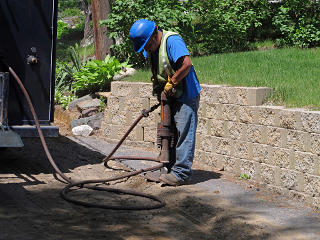
|
With the roadbed now properly graded and flattened it was almost ready
to pave, but a bunch of little fiddly bits remained to be fixed up first.
The pavement layers would build up a specific height to the final surface,
so everything had to be planned to match that.
[Thumbnail pictures are linked to larger ones.] |
Bind me in black
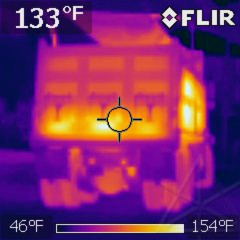
|
The load was not in contact all the way up the sides of the dump, but made for an amusing "whatcha got in there?" profile. Despite the fact that the metal dump freely conducts heat out, one of the drivers told me that a truckload of hop-top can basically stay workably warm "all day" if it has to sit around for a while. |
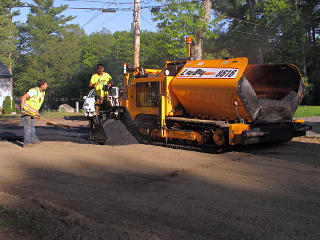
|
The paver was one we typically see on road jobs these days, but I'd never taken a close look at one. It's a Lee Boy 8616, suited for small to medium jobs, and is basically a spreader with a small reserve hopper so it can keep going while supply trucks swap in and out ahead of it. This one also features an electrically powered heater to keep the asphalt up at temperature as it gets distributed. |
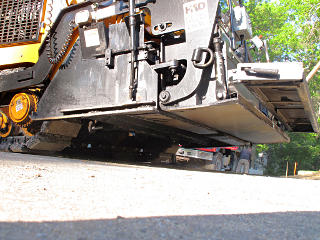
|
Not that much to see under the business end of the paver; basically a distribution slot and a heavy flat plate behind it to give an initial tamp to the material being laid down. This is referred to as the screed, and its design and how it attaches to the rest of the machine is significant in how it works to lay a nice level surface in one pass. |
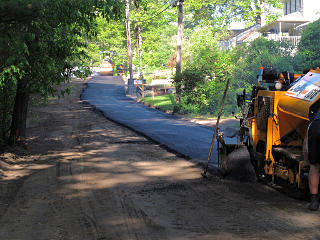
|
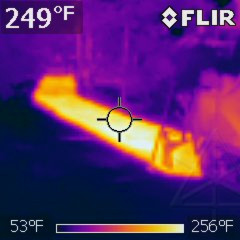
|
|
The three trucks of asphalt that had arrived with all the paving stuff were
enough for a one lane strip about halfway down the stretch, which now sat
there baking away, made much more obvious in an IR shot. Spec for asphalt
being laid is north of 300 degrees, to give it the flexibility and binding
ability needed. In fact there's a whole optimal design cooling profile
for the various stages of spreading and rolling.
The trucks then headed off for more asphalt, the supplier of which was conveniently only a couple of miles down the road. | |
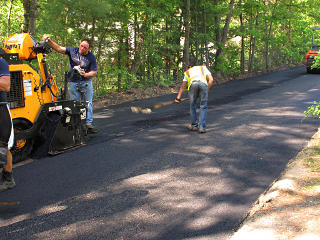
|
The two runs were basically butted together, and any minor mismatches were smoothed across by hand all the way down. |
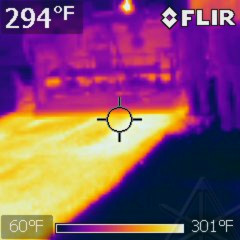
|
A closer IR shot of what emerged from under the paver showed the stuff going down at a nice healthy temperature, not entirely uniform but close enough. |
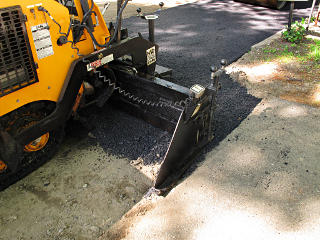
|
Deeper driveway cuts were accomodated by extending the screed on the fly to meet the edge. A little bit of hand shoveling by the guys alongside the machine quickly filled in any missing bits. |
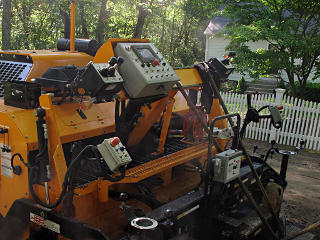
|
The paver has multiple control positions, and the guys driving it were constantly fiddling with layer depth and profile and screed extension as it moved along. |
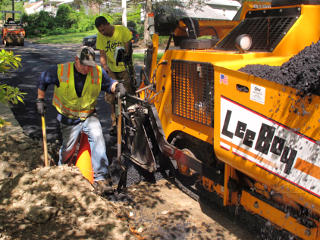
|
They ducked in a little around the catch basins to avoid dumping pavement in on top of the steel plates on top. They still got some on it... |
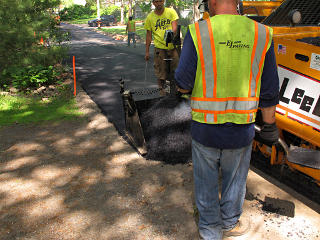
|
Other than that it was pretty straightforward running, although they didn't exactly stay 2 feet off the stakes. |
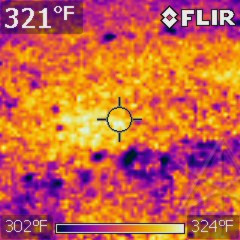
|
The fresh stuff was well above 300F now, looking like colorful lava of some sort in the IR. With the auto-ranging nature of the FLIR, blue doesn't mean anything like "cold" here! This is one of a couple different color map schemes the camera has; the other one we often see is "rainbow" and I think it's less intuitive in terms of how we would "see" hot and cold. |
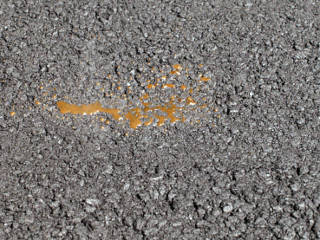
|
What worked much better was a detail of the roller water boiling back out of the mix; the short video is here and gives an interesting stereo sound-field of the bubbling going on all around. The big-picture is left linked here to show the relative sizes of stone used. This was the "binder" layer, which generally uses a certain proportion of larger stone but still includes the fines to help seal everything together. Its surface winds up a bit rough but that makes it a little more stable, forming a solid base for the final layer which would be finer-grained. |
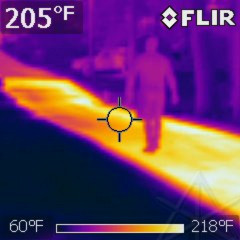
|
The recent runs were still wikkid-hot, that didn't bother some of the guys who walked over it with impunity. With thick shoes on, of course! I was clearly going to stay off them for a while, and for chronicling purposes I had to sort of plan ahead as to which side of the street I was going to be on before the paver came through any one stretch. |
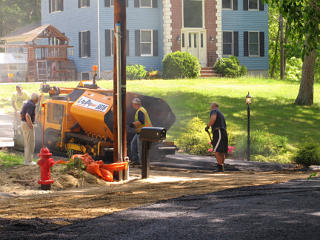
|
The conveniently-installed niece of the developer, of course, was going to get a nice approach into her own driveway. The old man was over there to make sure of that. |
_H* 140516